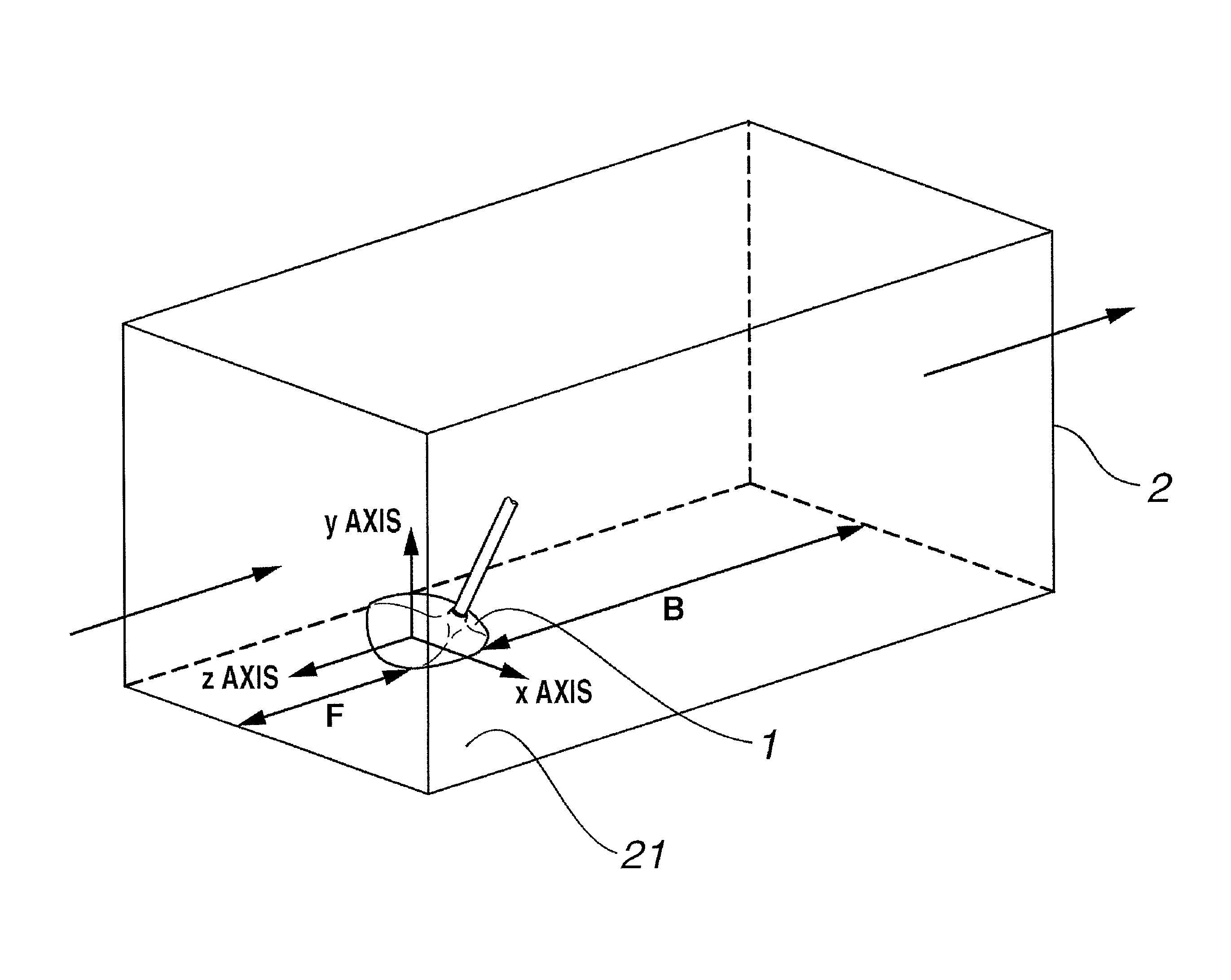Simulation method for evaluating a golf club head
a golf club head and simulation method technology, applied in golf clubs, cad techniques, instruments, etc., can solve the problems of time-consuming and costly experimental evaluation based on actual physical prototypes, complex airflow turbulence around the body, and the inability to accurately evaluate the aerodynamic performance so as to efficiently develop a higher performance product, the time required to evaluate the shape of the golf club head is shortened, and the effect of increasing the accuracy and objectivity of the evaluation
- Summary
- Abstract
- Description
- Claims
- Application Information
AI Technical Summary
Benefits of technology
Problems solved by technology
Method used
Image
Examples
example 1
[0070]A virtual airflow region and a club head model similar to those shown in FIG. 1 were set up in a computer by setting up, within a virtual space created in a computer, a club head model of the shape shown in FIGS. 6 and 7 and a virtual airflow region surrounding the periphery of the club head model, and by also setting up, on a bottom side of the virtual airflow region, a wall representing a ground surface, thereby making the bottom side of the virtual airflow region a closed side, and setting the clearance between the club head model and the ground surface to 50 mm. The dimensions of the virtual airflow region were set as follows: the vertical and left / right dimensions were each set to 1 m, the length F in front of the club head model was set to 50 cm, and the length B in back of the club head model was set to 1 m. The left / right direction of the club head model was set as the x axis, the vertical direction of the club head model was set as the y axis, and the front / back direc...
example 2
[0074]Aside from setting the clearance between the club head model and the ground surface to 10 mm, the x-axis direction, y-axis direction and z-axis direction forces acting upon the club head model were calculated in the same way as in Example 1. The results are shown in the graph in FIG. 5. Also, as in Example 1, the distribution in pressure due to air flow around the club head model was visualized by isobaric lines or isobaric surfaces, or stream lines of the same air flow were visualized. FIG. 8 shows the pressure distribution, and FIG. 9 shows the stream lines.
Observations Concerning Examples 1 and 2
[0075]As shown in the graph in FIG. 5, the x-axis direction, y-axis direction and z-axis direction forces each vary depending on the clearance with the ground, confirming that it is possible with the simulation method of the invention to evaluate the aerodynamic performance of the club head by estimating the aerodynamic forces which act upon the club head when a golf club is swung. ...
PUM
 Login to View More
Login to View More Abstract
Description
Claims
Application Information
 Login to View More
Login to View More - R&D
- Intellectual Property
- Life Sciences
- Materials
- Tech Scout
- Unparalleled Data Quality
- Higher Quality Content
- 60% Fewer Hallucinations
Browse by: Latest US Patents, China's latest patents, Technical Efficacy Thesaurus, Application Domain, Technology Topic, Popular Technical Reports.
© 2025 PatSnap. All rights reserved.Legal|Privacy policy|Modern Slavery Act Transparency Statement|Sitemap|About US| Contact US: help@patsnap.com



